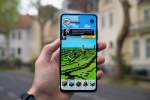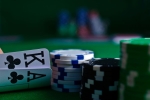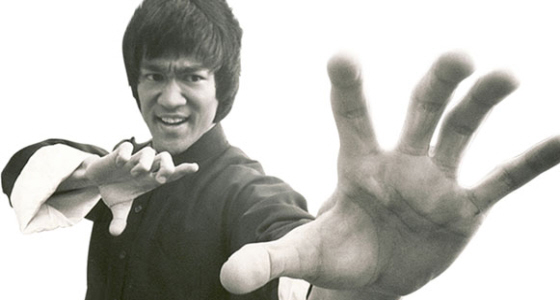
In an increasingly violent modern society, can a man who teaches physical combat be a positive role model?
There is a seemingly obvious contradiction in studying a combat art and claiming to be a peace-loving individual but, just as the personalities and moral characters of builders, actors, footballers and politicians vary greatly, so too do those of martial artists and boxers. Much as the balletic grace of stylised movie martial arts – which can often be beautiful to watch – contradicts the bloody savagery of mixed martial arts contests, so too can the outside-the-ring gentleness of pugilists appear contrary to their chosen profession.
Although martial arts were formulated as battlefield techniques and were honed in countless wars and violent upheavals, they also contain elements of philosophy and codes of conduct which provide a blueprint for a way of life and morality.
The most obvious example of this would be China's famed Shaolin Temple warriors; the Buddhist monks who preached peace whilst training in potentially lethal methods of hand-to-hand and armed combat and yet their skills were born from a need to defend themselves against the violent street-robbers of the period. Likewise the 'gentlemen warriors'; the Japanese Samurai, who practised poetry and flower-arranging, alongside their swordsmanship and wished only to engage the very best of opponents in battle.
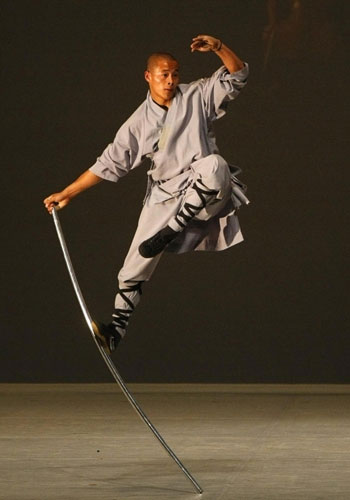 Perhaps the Shaolin monks' desire to learn the skills to physically protect themselves against bigger and more aggressive tormentors, is the very same one replicated today by millions of people the world over, who live in constant fear of violent assault, every time they tentatively step out from their front doors? But, what if those very tormentors also aspire to learn the combat arts in order to enhance their brutality?
Perhaps the Shaolin monks' desire to learn the skills to physically protect themselves against bigger and more aggressive tormentors, is the very same one replicated today by millions of people the world over, who live in constant fear of violent assault, every time they tentatively step out from their front doors? But, what if those very tormentors also aspire to learn the combat arts in order to enhance their brutality?In centuries past, the Masters of the various arts would accept a student based upon their character as much as their potential for mastering the physical aspects of the particular martial style / system but, in today's money-motivated society, can we still rely upon an instructor's morality to determine their acceptance of a new student?
I myself have trained with a few 'dubious types' over the years – including several instructors who abused their positions and physically hurt and humiliated students – but the vast majority of people I trained with have been a pleasure to know; with no obvious psychological or emotional problems.
On his website renowned martial artist Simon Lau reflects upon the negativity often directed against the martial arts: "The image projected is generally one of violence. Stories have been reported of attacks involving 'Samurai swords' and 'Ninja throwing stars' which, whilst appalling to everyone, in all probability did not involve trained martial artists, yet it is exactly that section of our society which suffers as a result of these stories...
This perception must be reversed but the only true way this can be achieved is by education of how martial arts can be of real benefit to a person's whole being. As martial artists we should relish the opportunity to show the world the enlightened ways of martial arts and to ensure that we show our arts and ourselves in the best light, with integrity and dignity. Like any other art form, be it painting, dance or acting we should celebrate in what we do and in what we have to offer society".
Much emphasis is placed upon codes of conduct and the immorality of deliberately hurting an adversary in traditional martial arts and some schools actively promote non-violent resolution to conflict; teaching methods of understanding emotional and aggressive behaviour and learning how to 'defuse' an aggressor's violent intentions.
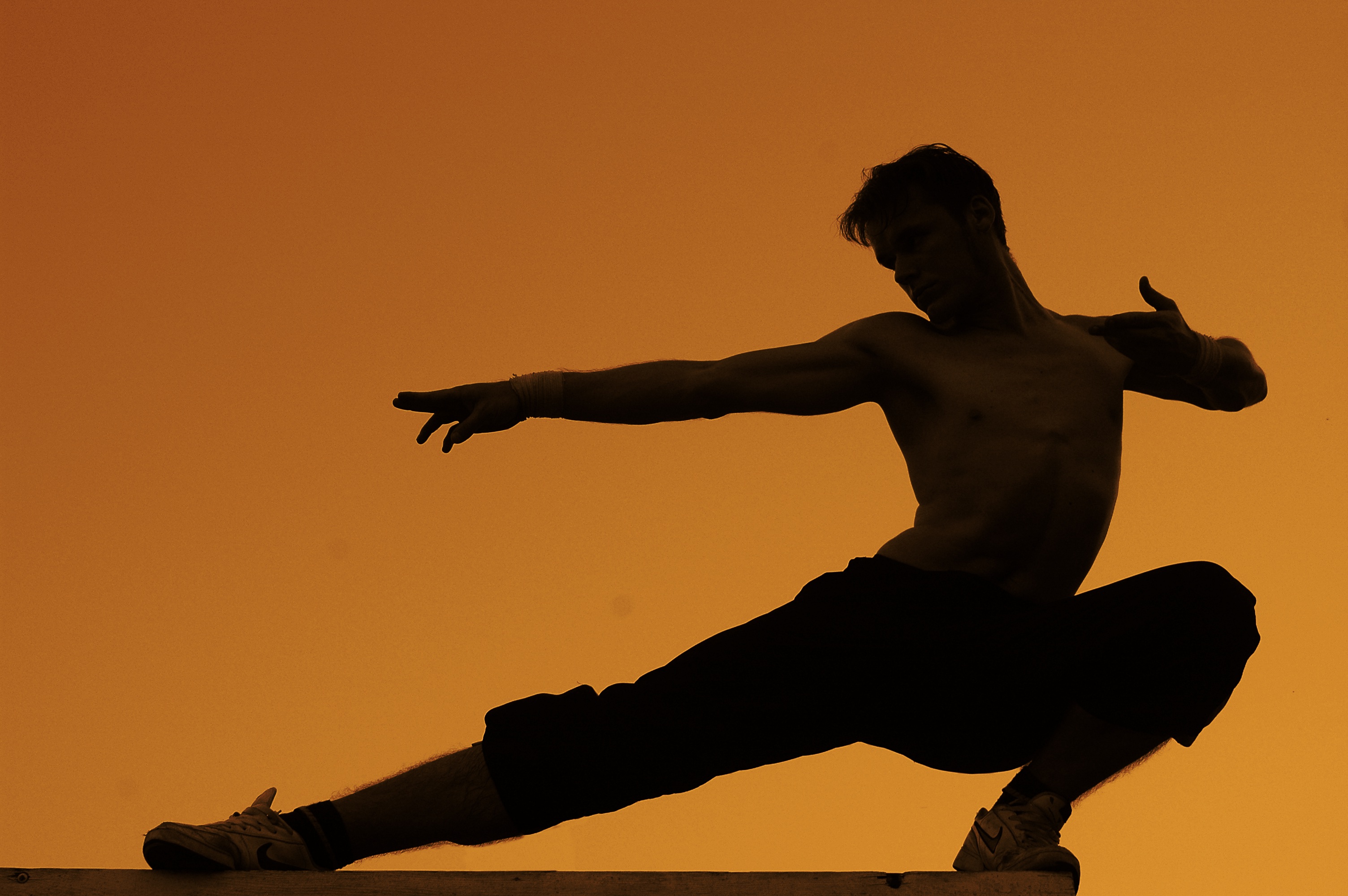
In 2009 there was an inspirational story in Combat magazine, which looked at the tale of George, a young boy with Asperger's Syndrome.Asperger's is a form of autism which impairs an individual's ability to interact with others socially. George had experienced many difficulties and tantrums in his young school life and so his mother wasn't sure what to expect when he expressed an interest in a local karate club: "George was seven when he started at the newly formed Falcon Karate Club...not long after being diagnosed...we shared our concerns and reservations with Sensei Seb, as he did with us, where he explained it was something [Asperger's] he knew very little about but was willing to learn more through ourselves...It was noticeable from his first lesson that George seemed to enjoy and benefit greatly from the routine and structure that karate offers."
However, this positive story of the young boy and his instructor's on-going mutual learning relationship is offset by the memories of Geoff Thompson.
Geoff Thompson is one of Britain's most respected 'reality-based' self-defence instructors and a virtual 'must have' in most martial arts students libraries of books and training videos. Geoff's traditional martial arts background transmuted into a 'street-practical' system of his own, which eschews many of the 'niceties' of traditional arts and focuses upon simple but effective self-protection techniques for, as he refers to it, the 'pavement arena'.
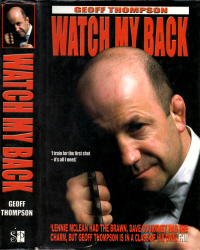 Thompson's introduction to martial arts though was not as satisfactory as George's. From 'Watch My Back' [2000]: "I started a martial arts class – aikido – in my bid to build confidence. Life was my bully and I needed an arsenal to defend myself. Unfortunately my efforts had the opposite effect. If I thought the bullying was a problem I was in for a shock when I started aikido; my real problems were about to begin.
Thompson's introduction to martial arts though was not as satisfactory as George's. From 'Watch My Back' [2000]: "I started a martial arts class – aikido – in my bid to build confidence. Life was my bully and I needed an arsenal to defend myself. Unfortunately my efforts had the opposite effect. If I thought the bullying was a problem I was in for a shock when I started aikido; my real problems were about to begin.At first it was great. I was eleven years old and the teacher – a very big man in his late twenties – took an instant shine to me. I became the class pet and so when he asked me and a few other students to stay over at the centre one night, to help fix some of the damaged training mats, I was dead keen...
When I got to the club that night there were no mats to fix and the other lads who had been invited didn't turn up. I should have seen the danger signs but, at eleven, you don't, you just trust...It seemed a bit strange but for a kid my age it was still an adventure, so I wasn't that bothered...
It was in the middle of the night that it started. The abuse; the invasion of my body by the cold hands of paedophilia. I was drenched in fear. By the morning I was still crying and shaking...My hero, the man I adored and trusted, the man I aspired to be, my role model, let me down. Actually, he smashed my world apart."
Thompson would eventually return to martial arts, in his on-going quest to defend himself against firstly school bullies and, latterly, his own inner demons. By the mid 1990's Geoff Thompson had become a best-selling author, writing about his experiences as a doorman and producing a series of books dealing with fear control; a subject dear to his own heart.
The issue of bullies is one which attracts a lot of young people to take up a martial art. Robert Higgs authored the book 'What Have I Ever Done To You?', chronicling his experiences as a bullied child. In Combat magazine he summarised: "Bullies need the fix of confidence, they are playground predators, addicted to the power rush bullying brings. They lack empathy and have no fear or understanding of consequence...
I found myself threatened, putdown, punched, kicked and ostracised. Worse was the feeling of hopelessness. Life became a constant cycle of waking up to a feeling of anxiety that dragged my spirit into apathy and depression...
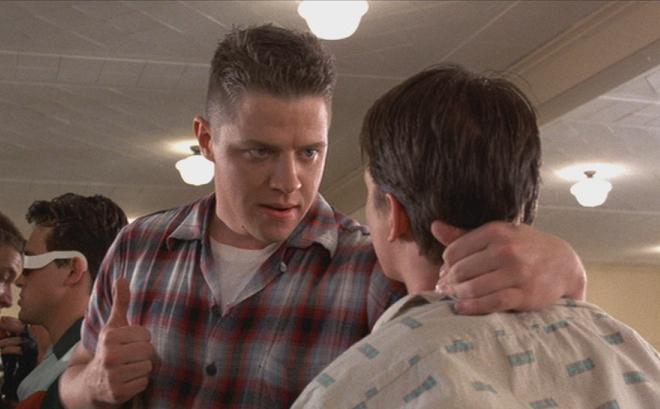
I tried to ignore them but a bully never gets bored. Each passive reaction draws them back for more......My fears of physical confrontation were beaten when I joined a boxing club and stepped through the ropes to spar...And changing that thought process and leaving my victim state was something I had to do because some people never grow up. They continue to live by playground rules. They take the 'bully' into the pub, the workplace, the home."
As with his contemporary Geoff Thompson, martial artist turned author Jamie O'Keefe's martial arts 'career' saw both positive and negative role models. Again, getting into the arts because of a bullied youth, O'Keefe had trained with various instructors in his teens but had even experienced bullying behaviour within the dojo. From 'Thugs, Mugs and Violence':
"Karate was becoming more to me than just a fighting art to help me look after myself. I was beginning to take on board the whole philosophy...I guess I was becoming sick of the violence in my life.
Unfortunately one of my karate instructors was a bit of a tosser and did many things that I did not consider that a martial arts instructor and positive role model should be doing.
For one, he was shagging his female students...Some of them were barely over the age of consent and he was being trusted, by the children's parents, to educate their children. He was abusing his position of trust."
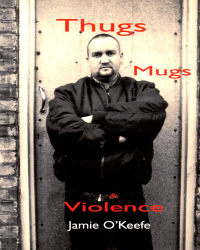 Because of incidents like that endured by Thompson and observed by O'Keefe, standards have since been 'tightened' in regards to the running of martial arts clubs. Various organisations have instigated a level of expected standards and rules in order to safeguard young people. 'Sport England', for instance, have advised clear processes on the recruitment of Instructors or volunteers; clear descriptions of their roles and responsibilities; a code of conduct for both Instructors and students; systems for tackling bullying and other inappropriate behaviour and clear reporting procedures for abuse.
Because of incidents like that endured by Thompson and observed by O'Keefe, standards have since been 'tightened' in regards to the running of martial arts clubs. Various organisations have instigated a level of expected standards and rules in order to safeguard young people. 'Sport England', for instance, have advised clear processes on the recruitment of Instructors or volunteers; clear descriptions of their roles and responsibilities; a code of conduct for both Instructors and students; systems for tackling bullying and other inappropriate behaviour and clear reporting procedures for abuse.Martial Arts instructors have been required to hold liability insurance for a long time, as obviously the risk of injury in a contact sport is high. However, more recently there is also an expectation that instructors also hold a first aid certificate; have undertaken child protection training; have had a Criminal Records Bureau check and have also embarked on some form of training regarding instructing children with disabilities.
This returns us to the most obvious quandary facing the widespread acceptance of martial arts within schools or colleges, as either a sport or a 'life skill'. Even with all the above safety procedures in place; surely it ultimately remains a series of techniques which can injure, maim or even kill another human being? After all, that's what the various martial arts were originally designed to do.
Proponents of the 'traditional' martial arts will argue that there is far more to an art such as karate or kung fu, than merely the physical techniques and that they also teach the more esoteric aspects to their arts. They will also point to the discipline required of their students and state that this very discipline and respect shown towards their instructors and higher-grade [belt] students is sorely lacking in every other aspect of a teenagers life. Perhaps their ultimate argument though resides in the fact that the vast majority of new students are desperately searching for confidence or the means to defend themselves against bullies or assailants and that this should be the basic right of every human being; the ability to physically defend oneself against a 'predator'.
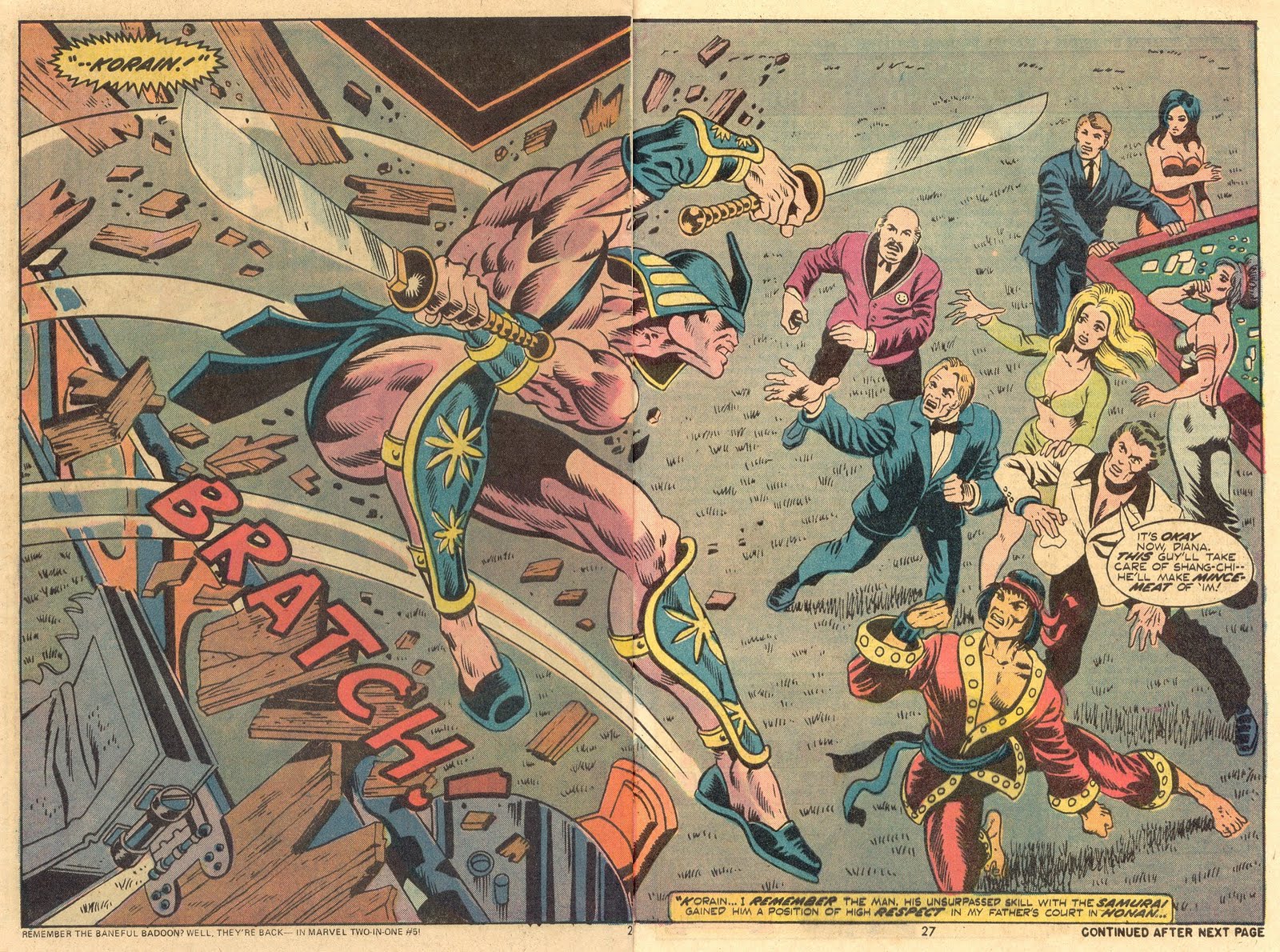
The afore-mentioned Geoff Thompson moved away from his karate roots and began to study methods of practical self-defence relevant to today's violent society. In so doing, he researched not only physical techniques but avoidance and awareness techniques; the mind-set of violent criminals and the methodology of rapists, muggers and murderers.
In his best-selling book 'Dead or Alive: The choice is yours', [1997] Thompson explains: "Most people are not and never will be physically or mentally equipped to cope with violent conflict: the expected immediate response of this majority is terror and capitulation...
For those that think acquiescence may be a safer option, recent surveys have shown that capitulating to an assailant, or pleading; 'Do what you want but please don't hurt me' [especially in rape scenarios] will not and do not guarantee victim safety. Capitulating victims also, in most cases, suffer far more than other victims with negative emotional aftermath...
If a situation does become 'live' your body will usually experience a huge injection of adrenaline, called an adrenal dump. While adrenalin can add speed and strength to the body's responses and dull pain, the adrenal dump causes sensations very similar to those of fear. Consequently many people 'freeze' under its influence." Thompson's self-defence manual was not an unrealistic 'how to' book, filled with pictures of bull-dog faced assailants having their arms effortlessly twisted behind their back by a ninety-seven year old arthritic woman but, rather, an examination of the modus operandi of an attacker and the likely physical, mental and emotional reactions of the 'victim'. This, surely, is the kind of self-defence advice every human being should be allowed to access in a community fraught with fear of violent engagements.
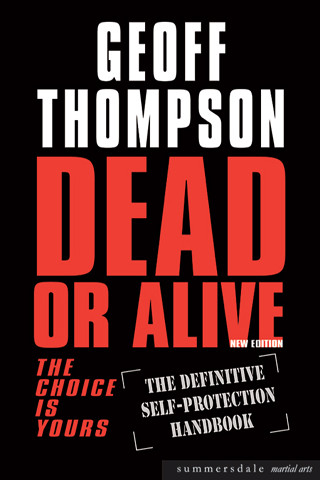 Continues Geoff: "Someone once asked me on a self-defence seminar what he should do if someone stared menacingly at him in the pub...'Put your drink down and go somewhere else', I said... This is not about defending your ego, it is about possibly defending your life or your liberty and if a pub or club is so threatening that I think I might be attacked 'just for being there', then I sure as hell don't want to drink there any more...
Continues Geoff: "Someone once asked me on a self-defence seminar what he should do if someone stared menacingly at him in the pub...'Put your drink down and go somewhere else', I said... This is not about defending your ego, it is about possibly defending your life or your liberty and if a pub or club is so threatening that I think I might be attacked 'just for being there', then I sure as hell don't want to drink there any more...Generally the attacker of today is a cowardly person who either fights from the podium of alcohol / drugs or...with the crutch of a weapon or an accomplice...
Many of the fights I witnessed in my time as a night club doorman began with the 'eye contact challenge'.You don't have to do anything wrong to be attacked by this kind of attacker, you just have to be there...Most assaults of this nature, are in my opinion, due to misplaced aggression...Whatever is pissing these people off in their sad lives, whoever is trampling on their roses, pissing on their parades, or metaphorically kicking the dog when he is down, you will become the object of that pent-up aggression because you spilled their beer, looked at their girlfriend or simply because you were there...
Most people don't want to fight and yet still find themselves engaging in arguments that will certainly lead to violence. A man walking down the street alone will think nothing of ignoring a group of barracking men from across the road. Put the man in the same situation and add a female companion and the same young man will be ready to argue and fight the world to defend his 'manhood'...if I have a fight I want it to be for a better reason than 'the guy was staring at me'. If I end up in court on a manslaughter charge I don't want the judge to be saying to me; 'You killed this man because he spilled your beer, Mr Thompson'?"
There are physical self-defence techniques in Geoff Thompson's and Jamie O'Keefe's books but they are more interested in alerting the reader to the true nature of today's violent society and the methodology of the aggressors they are likely to encounter. Again, I would suggest that this is essential information for everyone and whether it stands under the heading 'Martial Art' or 'Self Defence', it should be respected as potentially life-saving knowledge.
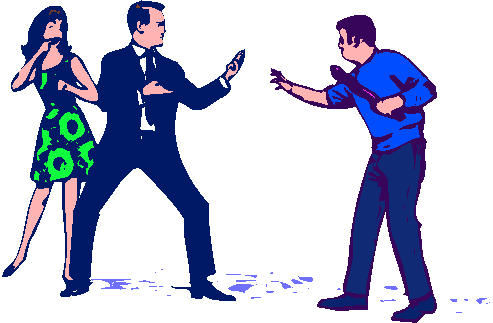
In the early part of the twentieth century boxing was comparable in popularity to football in the UK and most schools had a boxing programme as part of their physical education classes; recognising that boxing was a good way to channel boys natural aggression. As the decades passed though, boxing increasingly came to be viewed as brutal and medically and morally hard to justify in a 'civilised' society; resulting in its slow decline in popularity and in the numbers of young men participating.
When I was attending Senior School, in the 1970's, boxing had long ceased to be a part of the curriculum but the school retained boxing equipment and several times, over my enforced stay in hell, students who had been caught brawling in the playground would be 'encouraged' to settle their differences in the gym, with boxing gloves on.
Boxing had always been viewed as a means of 'escape' for young working-class boys. The academically and financially 'inferior' could hope to 'better' themselves via sport; whilst for others, it was a confidence-boosting means towards fitness and self-assurance. [And brain damage, according to the British Medical Association!]
Certainly, former WBO middleweight and super-middleweight champion Chris Eubank was vocally ambivalent about his chosen profession; stating on many occasions that he disliked the barbarism of a 'sport' in which the aim is to render the opponent unconscious.
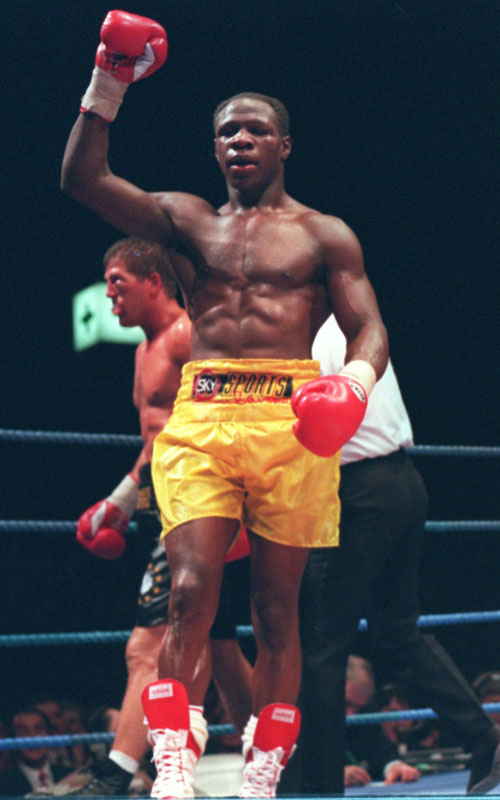 And yet, Eubank had turned to the sport as a distraction from petty street crime and continued to box, even after causing the near-fatal injuries to opponent Michael Watson; recognising that it was the only way he could earn such an extravagant and opulent lifestyle for his family. For many young men boxing was a means of redemption; a way out from a life of poverty and crime. Eubank's nemesis Nigel Benn had been involved in a series of gradually worsening 'scrapes' since early childhood and his parents were constantly trying to appease his school in order to prevent permanent expulsion. Benn had also become involved in petty crime, robbery and violence by his teens.
And yet, Eubank had turned to the sport as a distraction from petty street crime and continued to box, even after causing the near-fatal injuries to opponent Michael Watson; recognising that it was the only way he could earn such an extravagant and opulent lifestyle for his family. For many young men boxing was a means of redemption; a way out from a life of poverty and crime. Eubank's nemesis Nigel Benn had been involved in a series of gradually worsening 'scrapes' since early childhood and his parents were constantly trying to appease his school in order to prevent permanent expulsion. Benn had also become involved in petty crime, robbery and violence by his teens.From 'Nigel Benn: Dark Destroyer': "Once I started going out with the older boys my confidence grew out of all proportion to my years. By 13...if someone dared to touch me I'd knock their head off...The fact that I wasn't scared of anyone worried my father...I would fight anybody, no matter how big they were.
After he'd been summoned to school following yet another punch-up, Dad turned to me and said; 'If you've got that much energy, get in the boxing ring and do it for real'. Nigel Benn hadn't initially considered a career in professional boxing though and, upon leaving school, served in the Army for nearly five years. Disillusioned when he returned to civilian life, Benn spurned an offer to be involved in an armed robbery; returned to boxing and earned enormous sums of money over his hugely successful career; although not without experiencing similar anguish to Eubank, when Benn faced the American boxer Gerald McClellan in a brutal slug-fest.
"When I woke up I was in hospital, in so much pain, with Carolyne beside me, crying her eyes out. Gerald McClellan was in the same hospital, so I went in to see him. If I thought I was in a bad state – I had a fractured nose and jaw, my kidneys were so damaged I was passing blood and I had a shadow on the brain – then McClellan was twice as bad. He wasn't even awake. I went over to his bed, where I took his hand, kissed it and simply said 'Sorry'."
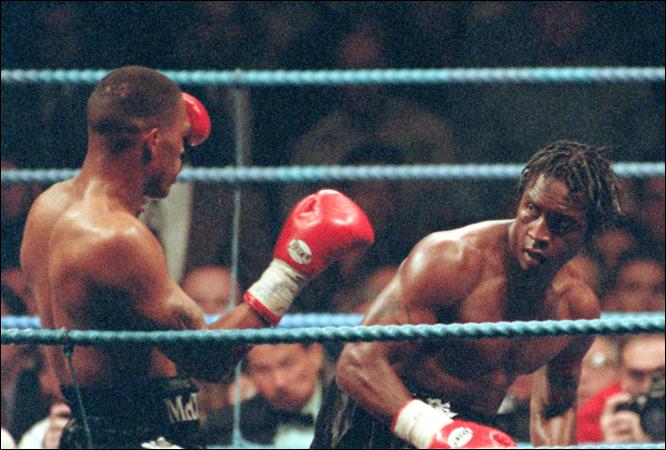
McClellan was left paralysed and blind, as a result of his fight with Benn. A few fights later and Nigel announced his retirement, having lost his desire to trade blows with other fighting men."It was over; the end of a great career and I felt good. I could look back on my life with pride and enjoy the memory of what I'd achieved...But more than anything, I knew I wouldn't miss distressing the people I loved every time I stepped into the ring. And I knew that I wouldn't have to worry about money." So once again we have the dichotomy and apparent hypocrisy of men who hospitalise and brutalise other men, in order to improve their own lives financially and yet – if they were not engaged in doing so, in the name of sport and entertainment – would almost certainly be involved in far more sinister and violent activities upon the streets.
Boxing had a history of 'saving' young men from crime. Among countless examples was America's George Foreman; 'rowdy' youth, who began to edge towards crime as his teens progressed.
From 'By George': "You need a good drink to mug a guy right; I guess to quell your conscience. It was a cycle; I stole money to buy drink and I got drunk to steal more money...For me, in those days, the law was the law of the jungle, where the end justified the means."
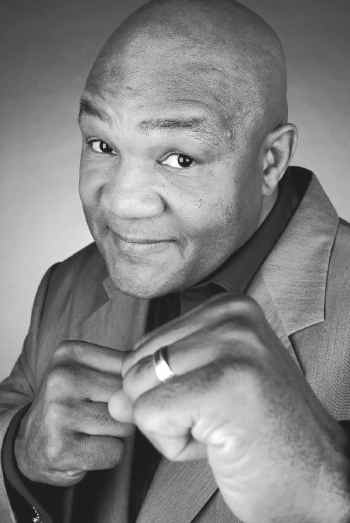 Foreman eventually took up boxing – as with Benn and Eubank – to channel his aggression and help prevent him from randomly assaulting people on the streets. George became one of the most famous heavyweight champs in boxing's history and a much-loved media figure in his later life. But it isn't always crime that boxing proves a distraction from. It has also helped young men lacking in confidence to build a better life and the ultimate example of this was the young Cassius Marcellus Clay, Jnr, aka Muhammad Ali, who was so upset after bullies stole his bike that he turned to boxing as a 'release' and eventually became a spokesperson for the oppressed black community of 1960's America.
Foreman eventually took up boxing – as with Benn and Eubank – to channel his aggression and help prevent him from randomly assaulting people on the streets. George became one of the most famous heavyweight champs in boxing's history and a much-loved media figure in his later life. But it isn't always crime that boxing proves a distraction from. It has also helped young men lacking in confidence to build a better life and the ultimate example of this was the young Cassius Marcellus Clay, Jnr, aka Muhammad Ali, who was so upset after bullies stole his bike that he turned to boxing as a 'release' and eventually became a spokesperson for the oppressed black community of 1960's America.From 'Muhammad Ali: His Life and Times': "When I was growing up too many coloured people thought it was better to be white. And I don't know what it was but I always felt like I was born to do something for my people...Then my bike got stolen and I started boxing and it was like God telling me that boxing was my responsibility."
There are, of course, examples of men who have not found salvation through boxing.More recently came the incredible soap-opera that was the Mike Tyson story. Seemingly saved from a life of crime, the former mugger and street delinquent was adopted by an elderly boxing trainer; who organised Mike's release from a juvenile detention centre and took him to live with him in his rambling house in rural Catskills. Dedicating himself to training every day, Tyson became the youngest ever heavyweight champ and was celebrated as a 'success story' globally.Less than a decade later Tyson had been imprisoned for rape and various exposes by 'insiders' had revealed a man still seething with the anger and insecurities of his youth, who – despite phenomenal fame and wealth via boxing – continued to exhibit inappropriate, anti-social and violent behaviour towards 'innocent' victims.
Before we leave the subject of boxing / martial arts in today's society, we should briefly look at the effect viewing it has on the observer. In ancient Rome – and other societies – the populace were 'appeased' by gladiatorial contests and the feeding of Christians to lions. [Of the two, Russell Crowe's bouts were more competitive.] Ever since then there had been some form of publicly acceptable brutality to 'enjoy' and boxers became the modern equivalent of the gladiators of ancient times.
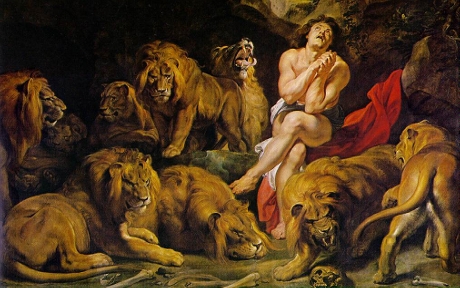
The 1970's and '80's saw a reversal; wherein the crowds were the ones participating in the brutality! This was the worst period of crowd violence in British football history, as hooligan 'firms' commenced using the matches as an excuse for mass 'gang' violence. Incredibly, in much the same way as gangsters became celebrities, some of these football hooligans became iconic figures in their areas and the likes of West Ham United's 'Inter City Firm' were immortalised in print. [One Millwall fan was shocked at the time. He went to see a fight and a football match broke out!]
If the non-violent sport of football could trigger such vicious emotions, then what of watching 'violence' in the first place? Especially if 'nationalism' is injected into the equation. From 'Four Kings': "Possibly because they have been disappointed so often, for so long, British boxing fans didn't need much of an excuse to become overenthusiastic and [Alan] Minter himself abetted the jingoistic frenzy in the run-up to the fight when he promised that 'no black man is going to take my title'. By injecting a whiff of racism into the issue, the champion ensured that [Marvin] Hagler's reception at the arena would be nasty.
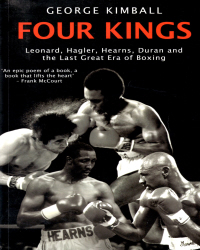 There was a substantial presence of the anti-immigrant National Front at Wembley that evening...Many of the spectators had arrived bearing Union Jacks, which they brandished like battle-axes." Hagler destroyed the hometown favourite Minter in three rounds to win the undisputed middleweight championship but the aftermath ensured that the American would never return to Britain to defend his titles. "Initially, there was an angry roar and then a second or two later the first bottle sailed into the ring, bursting and sending up a spray of beer that flashed under the ring lights. It didn't take long for the rest of the crowd to get the same idea."Hagler had to be escorted back to his dressing-room and fights broke out around the arena. This was not the only occasion that this happened at a boxing match and similarly raucous behaviour has been reported at various martial arts contests.
There was a substantial presence of the anti-immigrant National Front at Wembley that evening...Many of the spectators had arrived bearing Union Jacks, which they brandished like battle-axes." Hagler destroyed the hometown favourite Minter in three rounds to win the undisputed middleweight championship but the aftermath ensured that the American would never return to Britain to defend his titles. "Initially, there was an angry roar and then a second or two later the first bottle sailed into the ring, bursting and sending up a spray of beer that flashed under the ring lights. It didn't take long for the rest of the crowd to get the same idea."Hagler had to be escorted back to his dressing-room and fights broke out around the arena. This was not the only occasion that this happened at a boxing match and similarly raucous behaviour has been reported at various martial arts contests.Alcohol no doubt has a part to play in these incidents – as did racism in the above example – but how much does the observation of 'violence' cause the same reaction from the viewer? It is interesting to ponder what percentage of the populace have their aggression 'appeased' by watching others engage in combat sports; compared to those who are 'excited' enough by it to want to engage someone in combat themselves.
[David Weeks is an Instructor in Chinese Boxing and Filipino Kali and has written articles for Martial Arts Illustrated and Combat magazines. His book 'Essence of a Man: A study in male violence and the use of weapons', is available via Amazon.com or Kindle. ISBN 9781468072815 ]
© Words – David Weeks



